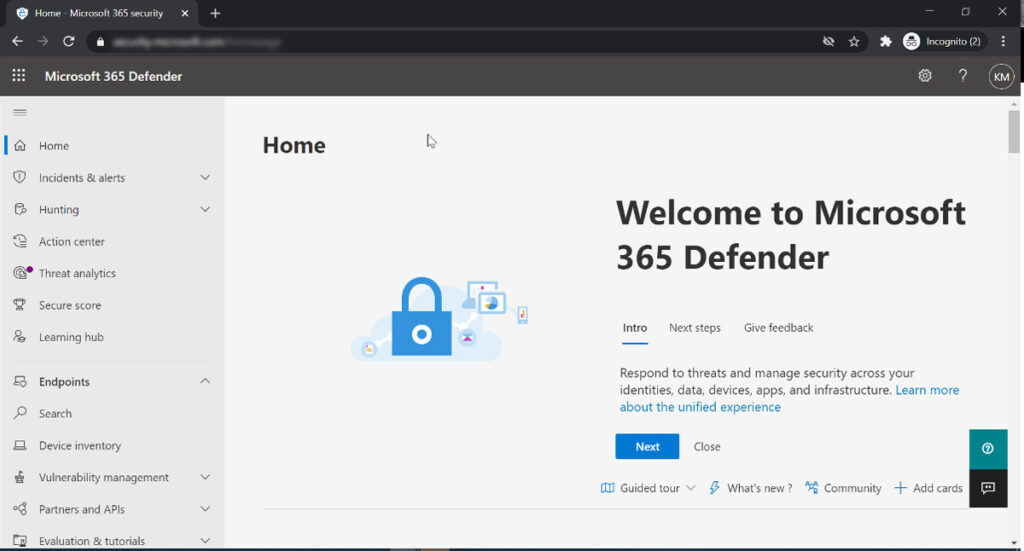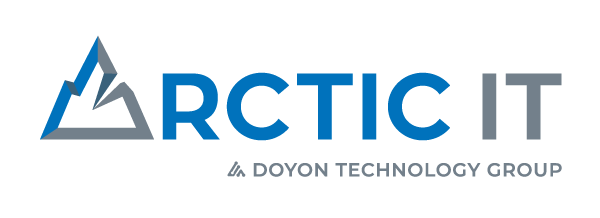In today’s interconnected digital landscape, organizations face an ever-growing array of cyber threats. Microsoft offers a suite of robust tools and services that can help organizations significantly improve their security posture. Let’s explore how to leverage Microsoft’s security assessments and daily monitoring tools effectively to enhance your organization’s resilience to threats.
Understanding the Importance of Security Assessments
Does your organization perform security assessments on a regular basis? Conducting regular security assessments is critical to identifying vulnerabilities and strengthening defenses against potential attacks. The goal here is to review infrastructure, policies, and practices to identify weaknesses that attackers might exploit. Organizations that are serious about staying safe from a breach need to make this a priority, be honest about their current posture, and be ready to take action.
Security assessments can help with:
- Identifying Vulnerabilities: Detecting gaps in systems, networks, and applications.
- Mitigating Risks: Understanding potential threats and addressing them proactively.
- Ensuring Compliance: Meeting regulatory requirements such as GDPR, HIPAA, or PCI DSS.
- Improving Incident Response: Enhancing detection and reaction capabilities.
If you are already overwhelmed, don’t be. There are several ways to get help with assessing your security posture, and Microsoft is there to help. They provide an integrated ecosystem of security services tailored to meet these objectives, streamlining security assessments across cloud, on-premises, and hybrid environments.
Security Enhancement Tools available with Microsoft Services
There are several Microsoft tools that can be used to assess your current situation, but more importantly, help keep your IT environment secure. In this article, we will be covering Microsoft Defender for Cloud, Microsoft Sentinel, Azure Security Benchmark and compliance offerings, Microsoft 365 Defender, and Entra ID Protection.
Microsoft Defender for Cloud
Microsoft Defender for Cloud is a comprehensive security management platform designed for hybrid and multi-cloud environments. It provides visibility into your security posture and recommends actionable steps to mitigate risks. Key features of Defender include:
- Secure Score: Secure Score in Microsoft Defender is a key metric for evaluating an organization’s security posture. It quantifies your adherence to recommended security practices across your environment, offering insights and actionable guidance. Accessing Secure Score involves navigating to Microsoft Defender for Cloud in the Azure portal, where you’ll find a detailed dashboard outlining your current score and areas for improvement. After obtaining your Secure Score, the next step is to review prioritized recommendations, such as enabling multi-factor authentication, applying security patches, or addressing misconfigurations. Use your initial score as your benchmark, then implement the necessary changes to improve your score. This process enhances your overall security, while continuously monitoring and reassessing to adapt to evolving threats.
- Vulnerability Assessment with Qualys: Microsoft Defender for Cloud integrates with Qualys to provide detailed vulnerability assessments for virtual machines, container registries, and other resources. Qualys performs in-depth scans to identify missing patches, misconfigurations, and outdated software versions that could expose your systems to threats. This integration enhances Microsoft Defender by enabling proactive identification of vulnerabilities, automating risk assessment, and delivering tailored remediation guidance. Organizations can use these insights to prioritize fixes based on the severity of vulnerabilities and potential impact, ensuring a focused and efficient approach to improving security.
- Threat Detection: Microsoft Defender relies on advanced analytics and machine learning algorithms to identify suspicious activities across your environment. It continuously monitors resources for anomalies such as unusual login attempts, unauthorized configuration changes, and potential malware presence. Integrated threat intelligence from Microsoft’s vast global security network enhances these capabilities, allowing Defender to identify and classify emerging threats in real-time. Alerts generated by Defender provide detailed context, helping security teams prioritize their response and mitigate risks more effectively.
Microsoft Sentinel
Microsoft Sentinel acts like a central nervous system for your organization’s security operations. It collects data from various sources, such as your cloud services, on-premises systems, and third-party tools, and analyzes it in real time to spot suspicious activities. Think of it as a command center where all your security information comes together for monitoring and response.
Here are a few ways you can use Sentinel to increase your security posture:
- Connect Data Sources: Start by linking Sentinel to all the places where your data resides. This includes your cloud services (like Azure or AWS), on-premises systems, Microsoft 365, and even third-party apps. Sentinel pulls in logs and activities from these sources.
- Monitor and Analyze: Sentinel continuously watches the incoming data for any unusual activity, like multiple failed login attempts or unauthorized access. It uses built-in intelligence and machine learning to flag potential threats.
- Respond Quickly: When a threat is detected, Sentinel creates alerts and allows you to automate your response. For example, if someone tries to access your system from an unusual location, Sentinel can trigger an action to block that access.
- Customize Playbooks: Use pre-built or custom playbooks to handle common security scenarios automatically. This could include isolating a compromised machine, notifying the security team, or disabling suspicious accounts.
- Visualize Security: Use Sentinel’s dashboards to view all security activities in one place. This makes it easy to identify trends, weaknesses, and improvements over time.
- Proactively Hunt Threats: Leverage Sentinel’s advanced hunting tools to search for subtle signs of threats that automated systems might not catch.
By following these steps, you can use Microsoft Sentinel to streamline your security operations, stay ahead of potential threats, and respond to incidents efficiently.
Azure Security Benchmark and Compliance Offerings
Another way to increase your security is by using the Azure Security Benchmark (ASB) and other Microsoft compliance offerings. These are like a security checklist and guide that help organizations meet industry standards and regulations. Here’s a simple explanation of what they do and how to use them:
What They Are
- Azure Security Benchmark: A set of best practices and recommendations aligned with well-known security frameworks, such as CIS, SOC II, NIST, and ISO 27001. It provides clear guidance on how to secure your cloud resources, ensuring that you’re following industry standards for data protection and risk management.
- Compliance offerings: Pre-built tools and templates that help organizations track and manage their compliance with regulations like GDPR, HIPAA, and PCI DSS. These offerings provide insights into where your organization stands with compliance requirements.
How to Use Them
- Start with Policy Management: Use the Azure Policy service to enforce the security rules and best practices outlined in the Azure Security Benchmark. For example, it can automatically ensure that encryption is enabled for all databases or that virtual machines are running the latest security updates.
- Monitor Compliance: Access the Compliance Dashboard to see how well your organization aligns with specific regulatory standards. The dashboard highlights gaps and provides actionable recommendations to address them.
- Implement Recommendations: Follow the suggested actions, such as setting up stronger identity controls, updating configurations, or enabling logging, to close security gaps.
By leveraging the Azure Security Benchmark and compliance tools, you can ensure that your organization is not only secure but also prepared to meet regulatory requirements efficiently. This helps avoid penalties, strengthens customer trust, and enhances your overall security posture.
Additional Microsoft security tools
Microsoft Defender XDR
Microsoft Defender XDR (formerly Microsoft 365 Defender) is like having a security guard team for your entire digital workspace. It protects your organization from cyber threats by keeping an eye on emails, files, devices, and accounts. This powerful tool monitors harnesses the power of AI to detect the bad guys when they try to access your emails, files, chats, and devices. Defender automatically blocks the threat, and keeps you notified along the way of suspicious activities.

Is this built in with Microsoft 365? Maybe. Microsoft Defender XDR is included in Microsoft 365 E5 and Office 365 E5 subscriptions. Microsoft 365 E3 and Office 365 E3 include basic security features but don’t include the full feature list of Defender.
Entra ID Protection
Entra ID Protection (formerly Azure AD Identity Protection) provides overall security for logins for all your users’ logins and activities, looking for anything suspicious. It detects strange login behaviors, like someone trying to sign in from two countries at the same time (impossible travel) or using unusual devices. It can also recognize when an account might have been hacked, such as after a phishing attack or if someone is using leaked credentials.
This application is so smart that if it finds a risk, it can enforce additional security measures, like requiring the user to verify their identity with multi-factor authentication (MFA) or blocking the login entirely. In addition, it arms you with detailed reports about risks, which help you understand where your organization might be vulnerable.
Use this powerful tool to stop attackers before they get in and keep your sensitive data safe. It works 24 hours a day and is intelligent enough to take action on your behalf. Entra ID Protection also helps you stay compliant by showing that you have strong identity safeguards in place.
Identity-related attacks, such as phishing and credential theft, are among the top cyber threats. Entra ID Protection helps secure user accounts by detecting and responding to identity-based risks. It’s an essential tool for keeping your organization safe in a world where threats are constantly evolving.
Let’s Prioritize the Security of Your Organization
Microsoft’s suite of security tools offers a powerful platform for conducting comprehensive security assessments. By leveraging services like Microsoft Defender for Cloud, Microsoft Sentinel, and Entra ID Protection, organizations can identify vulnerabilities, detect threats, and implement proactive measures to strengthen their security posture. Coupled with robust reporting and automation, these security enhancement tools enable organizations to stay ahead of evolving cyber threats and ensure compliance with industry standards.
If navigating Microsoft’s security tools still seems daunting, contact Arctic IT today. We are here to help you make these tools work for your organization.

By Paul Clark, Director of Security & Cloud Architecture at Arctic IT

